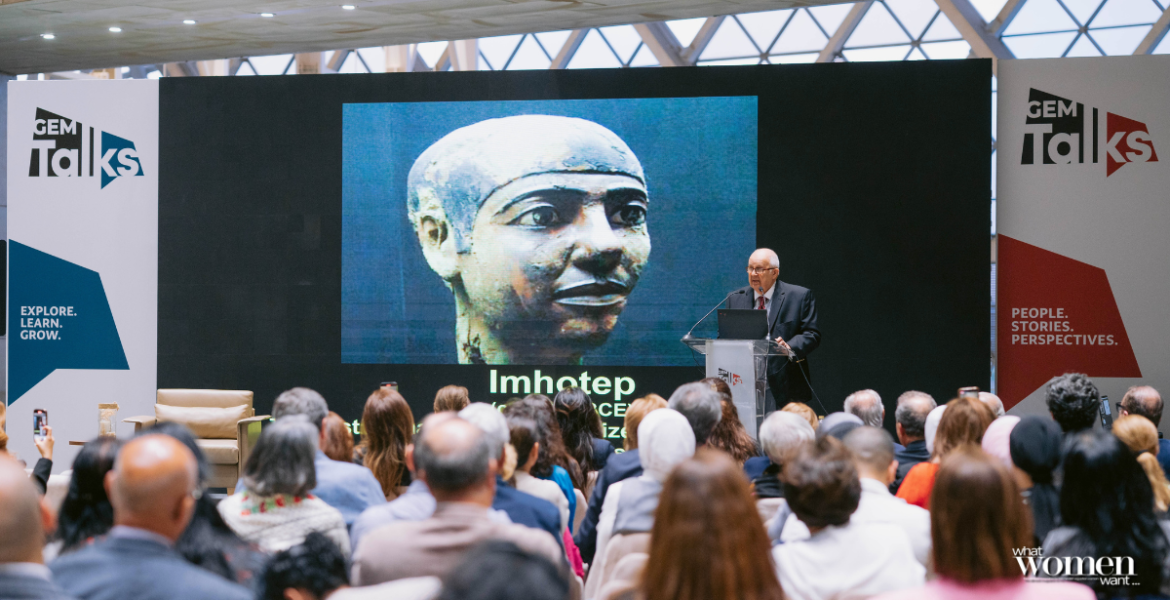The Grand Egyptian Museum has opened a new chapter. On April 28, the museum launched GEM Talks, a public program aimed at turning the museum into a space for ongoing cultural exchange. The first session featured Dr. Ismail Serageldin — a former Vice President of the World Bank and Founding Director of the Bibliotheca Alexandrina. He is also one of the world’s leading voices in culture and innovation. His keynote marked the start of a series focused on fostering dialogue and exchanging ideas. It aims to link the past with both the present and the future.
GEM Talks offers an open platform for cultural and intellectual exchange. It includes formats such as discussions, panels, debates, and workshops. The aim is to create a consistent space for dialogue on heritage, creativity, and innovation. It seeks to engage a broad audience and connect culture to present-day ideas and challenges.
Dr. Ahmed Ghoneim, CEO of the Grand Egyptian Museum Authority, commented: “The launch of GEM Talks represents a new chapter in our continuous efforts to make the Grand Egyptian Museum not only an extraordinary showcase of our history, but also a vital space for cultural and historical dialogue. Through this series, we are opening new horizons for conversations on diverse topics rooted in our shared legacy. It aims to create an open platform where diverse audiences can come together to engage, reflect, and be inspired by the richness of culture and heritage in all its forms.”
Dr. Ismail Serageldin’s Talk:
The inaugural session, led by Dr. Ismail Serageldin, explored creativity’s role in shaping human progress. It also examined the power of museums in fostering awareness and the transformative impact of artificial intelligence on artistic expression. Dr. Serageldin discussed innovative digital solutions that enhance visitor engagement in cultural institutions. These solutions offer new ways to experience and interact with heritage.
GEM Talks continues this approach by offering lectures, panels, debates, and workshops. Each format invites participation over passive observation. The program opens a space for regular, open conversations about cultural questions.

